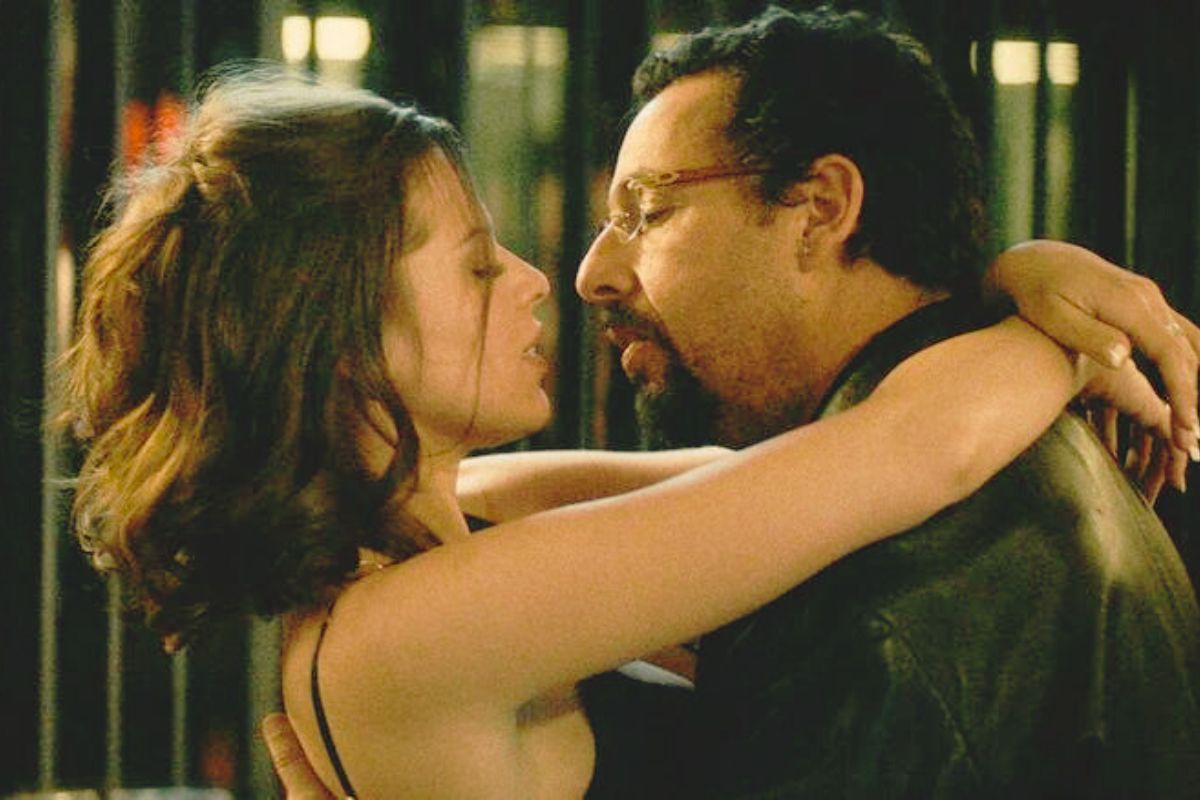No amount of time can erase the indelible image of Howard Ratner’s twisted grin etched into memory. Far removed from the typical Adam Sandler feel-good smile, it’s a haunting expression, the visage of a man whose victory is a mere prelude to his demise.
In the world of Uncut Gems, happiness for Howard comes at the cost of an insatiable desire for more, and that grin is the macabre aftermath of a Pyrrhic triumph. To understand why this chaotic ending lingers, we must trace the narrative back to its inception.
A Kaleidoscope of Calamity: The Genesis of Myth
The tale begins not with Howard Ratner, portrayed by Adam Sandler, but with calamity—a mining accident that birthed stolen black opals. The film interlaces Daniel Lopatin’s retro synth score with the vibrant hues of the gem, taking the viewer on a journey from the heart of the Earth to Howard’s colon during a routine colonoscopy.
Uncut Gems subtly asserts that whether precious stones or the aging flesh of an addict, both are the raw materials from which myths arise. Darius Khondji’s cinematography, saturated with vibrant colors, propels us through the gem, blurring the lines between man, myth, and material.

Howard’s Path to Destruction: Addiction, Bets, and the Pursuit of “Win”
The film unveils Howard’s mortality upfront, detected during a colonoscopy. However, Howard faces more immediate threats due to his reckless gambling addiction. Owing a substantial sum to dangerous individuals, Howard, unfazed, plunges headlong into the chaos.
The narrative unfolds with Howard’s fixation on the next “win,” a perpetual cycle of risks, deals, and gambles. Throughout the two-hour frenzy, Howard maneuvers through a shrinking tank of sharks, juggling family, bookies, and the pursuit of a big score, be it through the opal or betting on NBA star Kevin Garnett.
Compulsive Greed and the Relativity of Value
Uncut Gems delves into Howard’s compulsive need for more, revealing a self-destructive pursuit that leads to repeated downfall. The film accentuates Howard’s inability to appreciate the value of what he possesses, perpetually fixated on what he lacks.
From pawning KG’s ring to risking it all for the ultimate score, Howard’s relentless pursuit blinds him to the blessings around him. The narrative extends beyond Howard’s personal struggles, examining how humanity ascribes value to the world, shaping both individual lives and societal systems.

Howard Ratner: The Unseen Gem
In a narrative twist, the Safdie brothers depict Howard Ratner not just as a torrent of self-destruction but as a bad person. Despite his affair, relentless arrogance, and disregard for those around him, the audience can’t help but invest in his quest for victory.
The film orchestrates a cinematic trick, making Howard a person of value, despite his moral shortcomings. The final act, a nerve-fraying sequence involving high-stake bets, a million dollars, and lives on the line, culminates in Howard’s ultimate victory and subsequent demise.
The Grin that Echoes: A Macabre Conclusion
In a gut-wrenching twist, Howard’s ecstatic victory is short-lived. As he releases his captives with a triumphant grin, a bullet pierces his head, leaving the haunting expression frozen in time.
The film’s concluding moments mirror its beginning, traversing through the bullet hole in Howard’s cheek, back into the cosmic world of the uncut gem. Uncut Gems suggests an unending cycle of tragedy, wealth, and repetition. Yet, for Howard Ratner, it’s a strangely happy ending in an otherwise unhappy world—a testament to the film’s ability to elicit empathy for a deeply flawed character.
Note: The Safdie brothers’ uncanny ability to blur the lines between right and wrong, myth and reality, is a testament to the brilliance of Uncut Gems, leaving audiences both shaken and contemplative.

